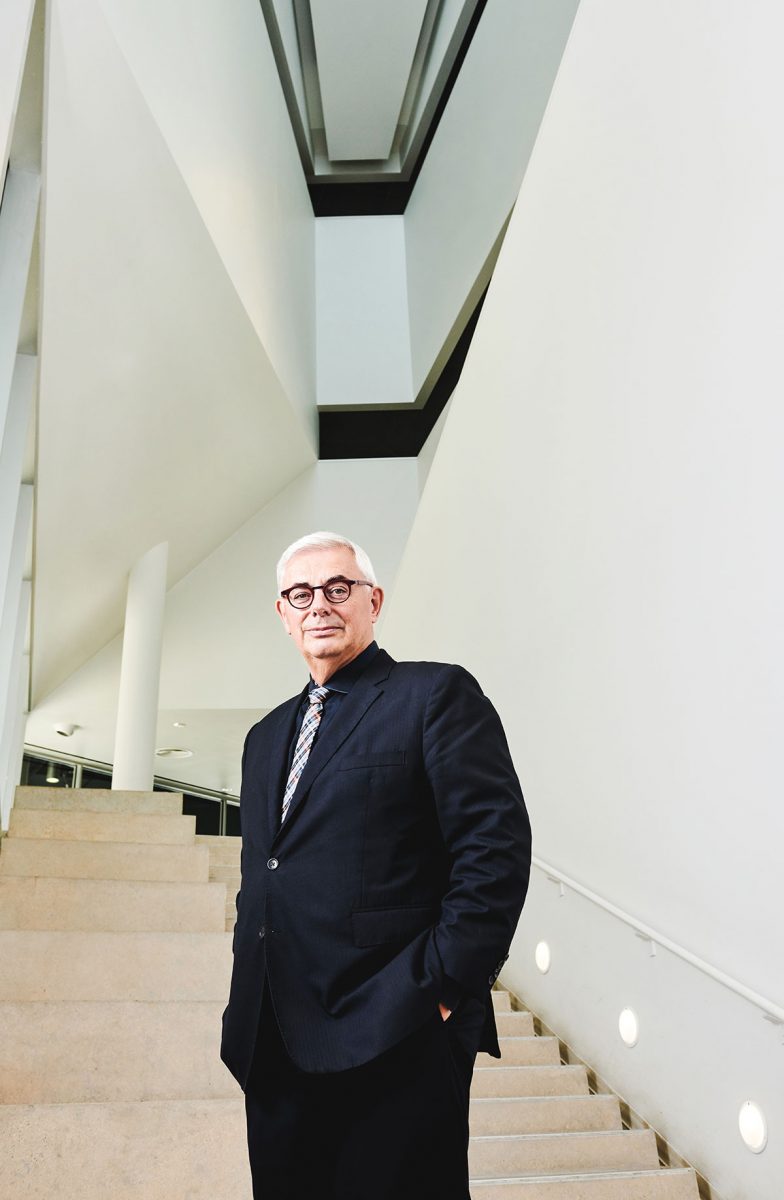
Collision
Fall 2019
In the early 1950s, there was a science-fiction film that earned a great deal of attention by positing the disasters that can result When Worlds Collide.
At universities, I think we can—and should—take the opposite view of collision.
Collision can generate energy, imagination, innovation and inspiration.
I am speaking of the collision of people and ideas, cultures and beliefs, generations and customs, disciplines and methodologies, and, yes, even the collision of worlds.
In our world today, there are those who have chosen to step back, to isolate themselves, to put up walls to try to keep out new or different people, ideas, cultures, beliefs. That is not how a university operates.
A university opens its doors to all, embracing inclusivity and diversity, and encouraging the coming together—the collision—of its disparate elements to create something new and exciting. We create spaces where students and faculty—and visitors—can safely collide.
Our classrooms, our laboratories, our recreational facilities, our very campuses, bring people of different backgrounds and belief systems together to challenge one another, to open one another’s eyes to new perspectives, to collide.
Indeed, as you read this, we continue to celebrate with the world community the extraordinary news that our alumnus, astrophysicist James Peebles, has been awarded the 2019 Nobel Prize in Physics.
I witness the creative spark of collision every day, when I walk across our Fort Garry campus and see student groups of different ethnicities raising money by selling the foods they grew up eating to other students largely unfamiliar with their fare. When I experience the productive collaboration on Bannatyne campus between the students, staff and faculty in our health-sciences colleges. When I visit our research teams around the world and see the coming together of disciplines, organizations and nations to combat HIV/AIDS or to learn more about the impact of global climate change.
It isn’t always easy, or always smooth.
Sometimes the collision hurts, offends, frightens.
The collision can be unpleasant and uncomfortable: it might be a heated classroom debate, a protest, a shout-down of a speaker at a public event.
But no matter what the case, at a university like ours, we dedicate a great deal of our energies to ensuring those collision points take place in as safe and respectful an environment as possible. That’s what makes universities so valuable, so indispensable to society and to the world: Here, people and their dreams and aspirations—if we do our work right—can collide safely and constructively.
And at the University of Manitoba, those collisions are unique because of our history, our geography, our demographics. Because of our commitment to Indigenous ways of seeing and knowing. Because of who we are, together.
Take another look at our new logo. Move your eyes up to that blue prairie sky. Imagine the northern lights playing in that sky as night descends. Feel that collision of light and energy. Those sparks. Those colours. The magic.
That’s collision.
That’s the marvel of collision at the University of Manitoba.






